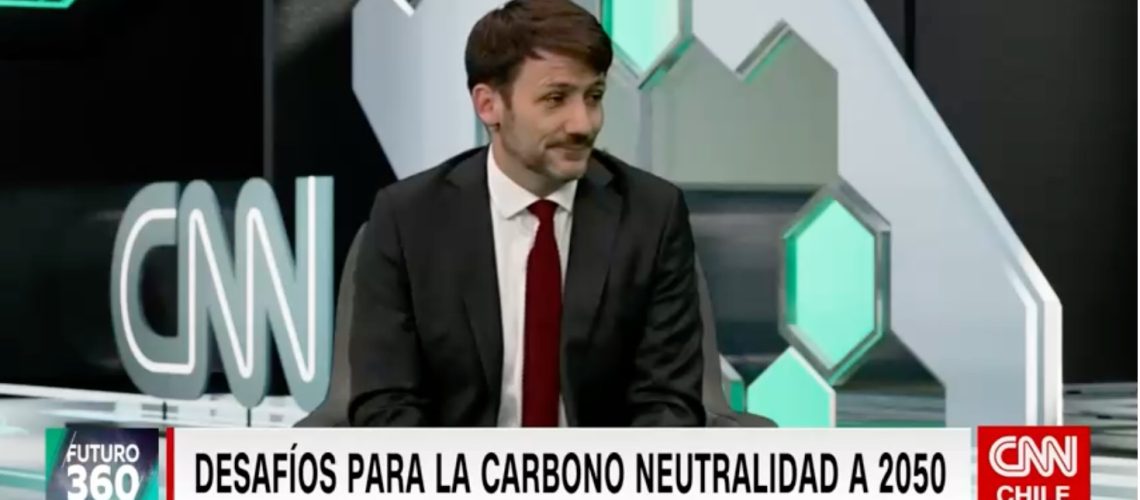Source: futuro360.com
What are the projections of the electrical system during the current government? Diego Pardow spoke with Futuro 360 about the establishment of flexible renewable energies, transmission lines, storage systems and the new tender for regulated clients.
The energy transition is a fundamental process to achieve carbon neutrality by the year 2050. At Futuro 360 we went further and investigated the complexities of the energy system in Chile during the Energy special.
What are the projections of the electrical system during the current government? Diego Pardow, Minister of Energy, spoke with Paloma Ávila about the establishment of flexible renewable energies, transmission lines, storage systems and the new tender for regulated clients. “Last year Chile injected 55% of the system’s energy in renewable energies and only 45% thermal. That 55-45 distribution, very few countries have achieved it” said the head of the portfolio.
Flexible renewable energy

For Pardow, it is necessary to move from these promotion policies to variable renewable energy, but the promotion of flexible renewable energy is also needed.
What is it about? According to the lawyer from the University of Chile, it is “flexible renewable energy until it allows us to generate in dark hours until we adapt to peak demand, it is the only one that will allow us to finally replace thermal power plants.”
“We cannot replace thermal power plants with more photovoltaic panels and windmills, we need other types of technology,” he added.
Along these lines, the authority assured that the bidding rules that were published “have a specific promotion mechanism for flexible renewable energy.” In fact, if this mechanism had been in place, the country would have more plants like Cerro Dominador or similar technologies.
Smaller transmission works in Chile
According to Minister Pardow, the focus is usually on these large transmission lines, “which are basically additional highways.” But there’s a lot that can be done in terms of smaller broadcast works.
“We are going to increase the transmission capacity of renewable energies basically with the same infrastructure that we have,” he assured. Today the roads are congested 8 hours a day, so storage and flexibility are ways to use this road for all hours of the day.
“The way in which (storage systems) are operated is something that we hope to bring out during this year, and the same with payments for power,” he said.
Storage, and in particular battery storage, are modular. That is, they are essentially equipment or containers that can be transported “relatively easily from one place to another.”
But despite the above, according to Pardow “it is not so easy to get” the necessary storage equipment and “establish the regulatory incentives for that to happen.”
“Just last year we managed to pass the Storage Law with a large majority. I wish all this agenda was already ready and we were 5 years back in time” he said.
It is expected that the power and storage regulations will be within this year after publication.
“I would hope that we don’t waste any more time debating whether or not the technical minimums are technically sound or if they represent what the system really needs,” he said.
The wholesale electricity market
The Electrical Coordinator prompted the tender for consultancy for the design of a new model for the wholesale electricity market, a consultancy that should last for about five months from the time it is awarded.
Despite the difficulties, the advance of renewable energies in Chile does not stop. In this sense, for the minister “the high penetration of renewable energy generates that one now begins to have questions that are more about what is coming ahead, which is how to replace thermal energy.”
The reform of the wholesale market, according to Pardow, is part of the things that “must be discussed again.”
“Our carbon tax system had a particularity, which was this type B compensation system where companies that do not pollute had to contribute to the financing of the tax accrued by companies that pollute,” he said.
The next tender for regulated customers

Calama Solar 3, the first Industrial Photovoltaic Plant in the country.
The National Energy Commission (CNE) made the preliminary bases of the national and international public tender for the supply of energy and electrical power available to the community for observations, which will auction a total of 5,400 GWh.
“They are bases that have 3 major changes or innovations. The first is that the country was divided into geographical areas,” said the authority.
The purpose of this initiative is to divide the country into three zones so that the risk of decoupling is minimized. If a company has its generation assets in the north of the country and wants to make offers to deliver power in the north of the country, it will be able to do so.
“Our fear was that in the next bidding process this risk of decoupling would be internalized by the participants and electricity prices would rise excessively,” he acknowledged.
Regarding what is coming, for Pardow the pillars of the Government’s agenda “was the promotion of storage and the flexibility of the operation.” “Each of those things is incorporated into the bidding base changes.”
“I hope this government will be remembered for helping the energy sector turn the corner and lay the foundations for this second period, where we take charge of the great challenge that lies ahead, which is to replace thermal generation with sustainable generation,” he reflected.

